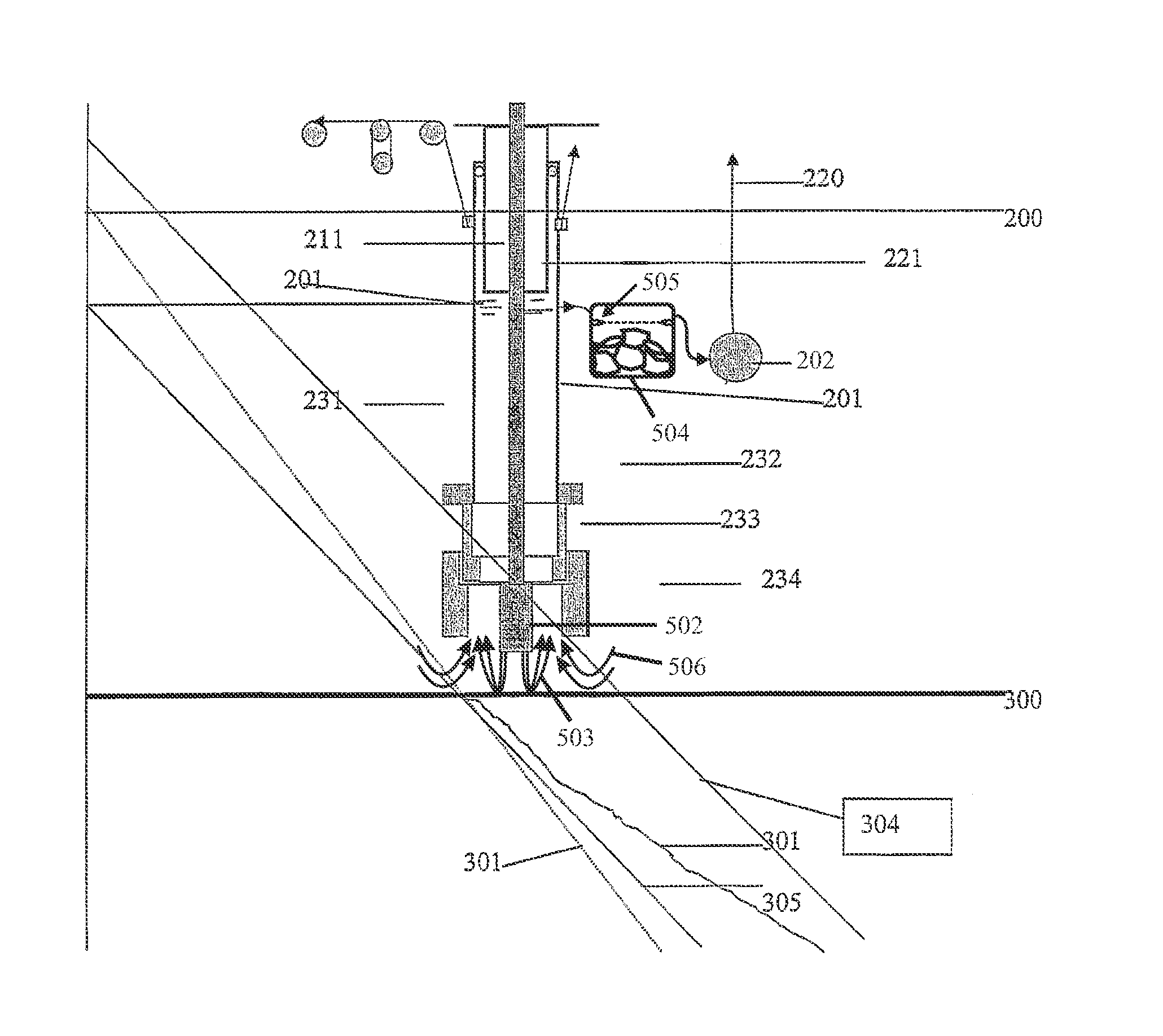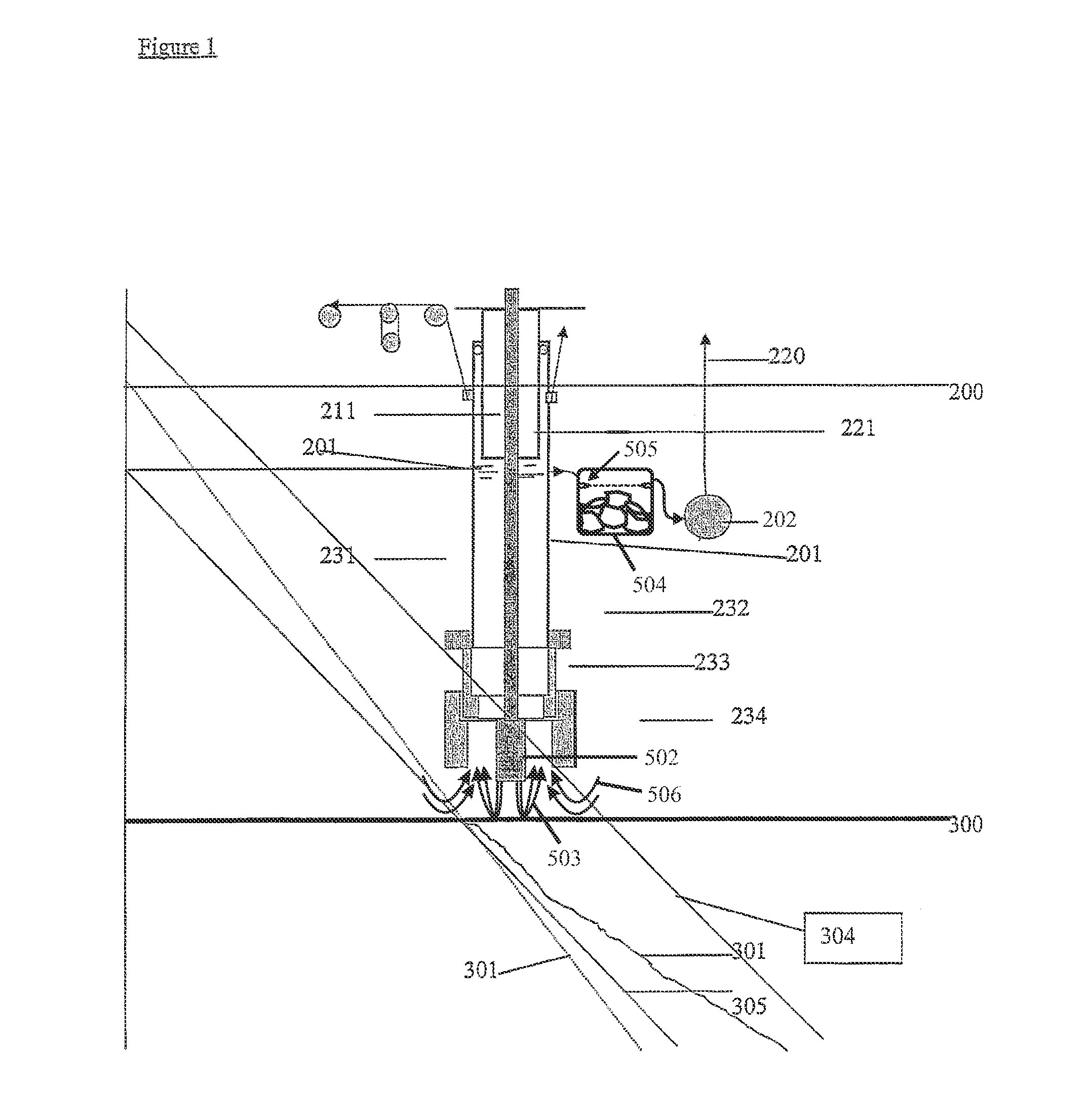Method and arrangement for removing soils, particles or fluids from the seabed or from great sea depths
a technology of seabed soil and seabed fluid, which is applied in the direction of mechanical machines/dredgers, well accessories, sealing/packing, etc., can solve the problems of wasteful process, inability to install a conventional drilling riser and take the returns, and excessive amount of drilling mud, etc., to achieve the effect of facilitating the removal of soil
- Summary
- Abstract
- Description
- Claims
- Application Information
AI Technical Summary
Benefits of technology
Problems solved by technology
Method used
Image
Examples
Embodiment Construction
As was described in the parent application, the riser tube 201 has a lower outlet between the sea level and ocean floor with valves 204 that will divert the fluid in the riser tube into the submersible pump system which will pump the fluid and solids back up to the surface.
By being able to drop the air / liquid level in the riser to a level below sea level, it is also possible to create a pressure inside the riser which is below that of seawater, which can be seen from gradient 305 which is below that of 302 which is seawater pressure gradient from sea level 200. This implies that seawater will flow into the end of the riser tube up into the lower outlet of the riser tube into the subsea pump 202 which will pump the content through the return conduit 220 back to a surface vessel.
When starting the drilling operation from a floating vessel the first structural conductor 236 can be run on the end of the riser tube 201. The conductor housing 234 is connected to the surface structural cond...
PUM
 Login to View More
Login to View More Abstract
Description
Claims
Application Information
 Login to View More
Login to View More - R&D
- Intellectual Property
- Life Sciences
- Materials
- Tech Scout
- Unparalleled Data Quality
- Higher Quality Content
- 60% Fewer Hallucinations
Browse by: Latest US Patents, China's latest patents, Technical Efficacy Thesaurus, Application Domain, Technology Topic, Popular Technical Reports.
© 2025 PatSnap. All rights reserved.Legal|Privacy policy|Modern Slavery Act Transparency Statement|Sitemap|About US| Contact US: help@patsnap.com



